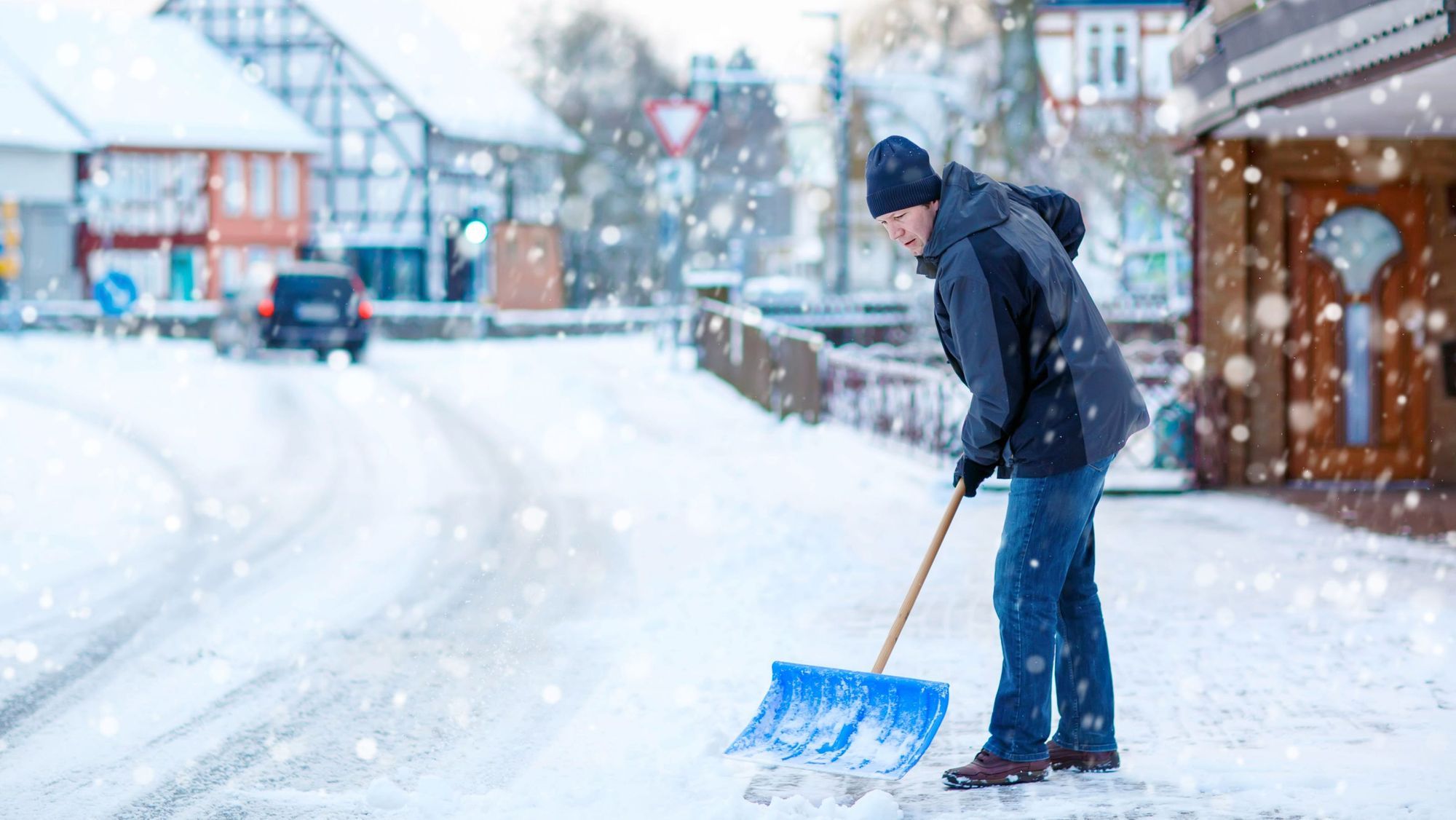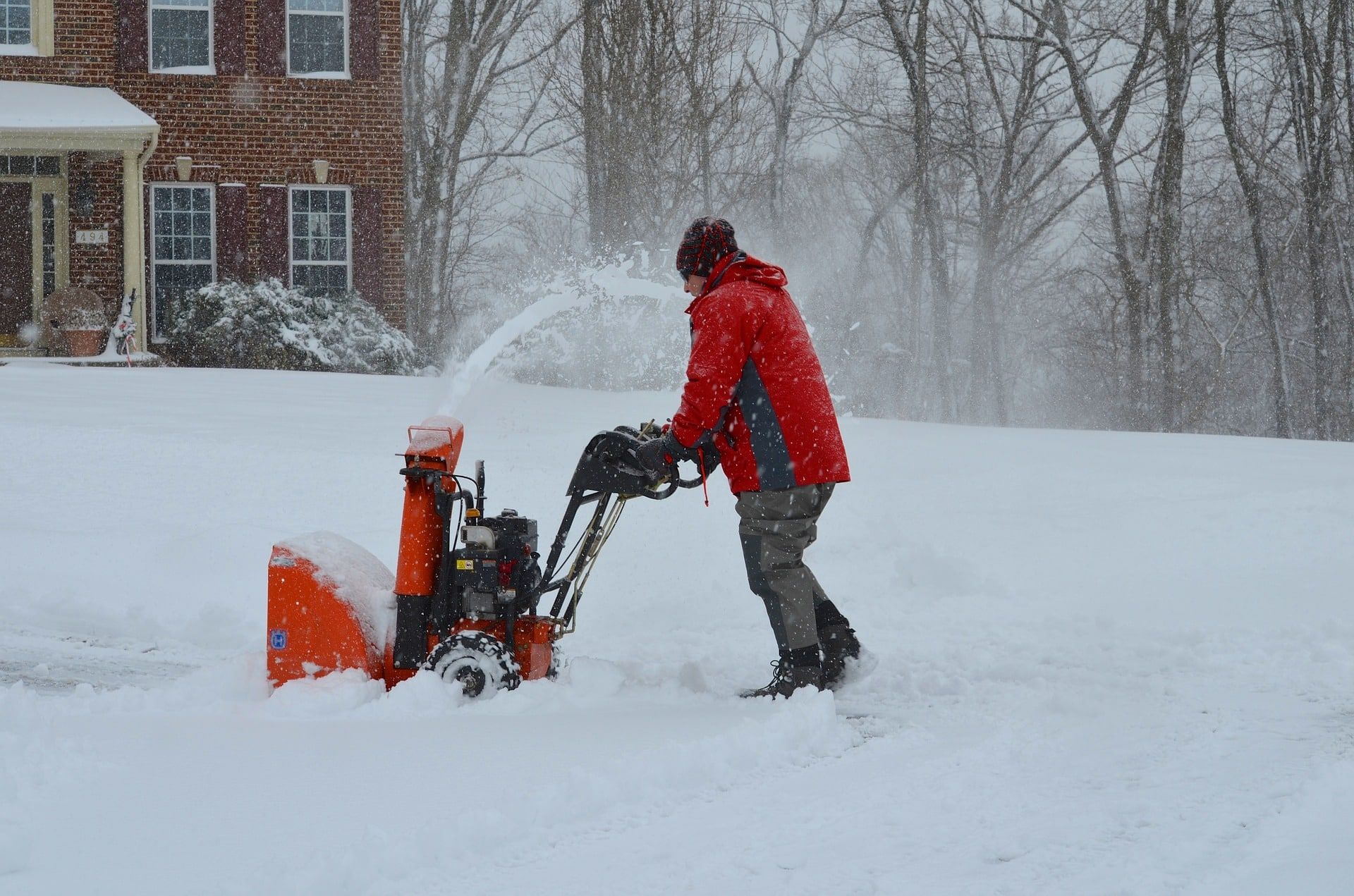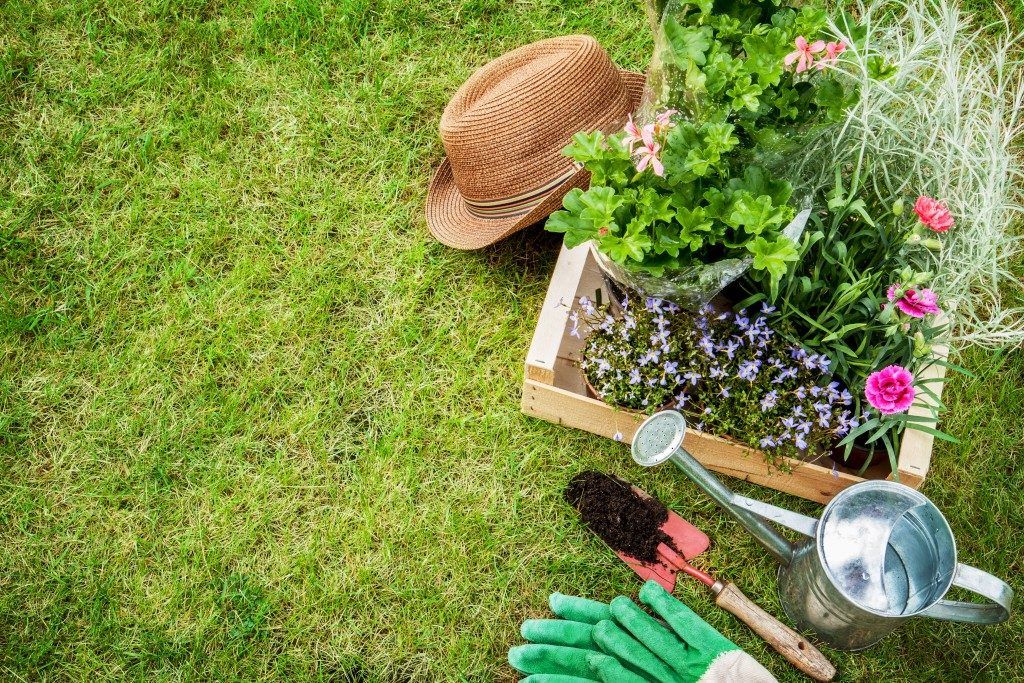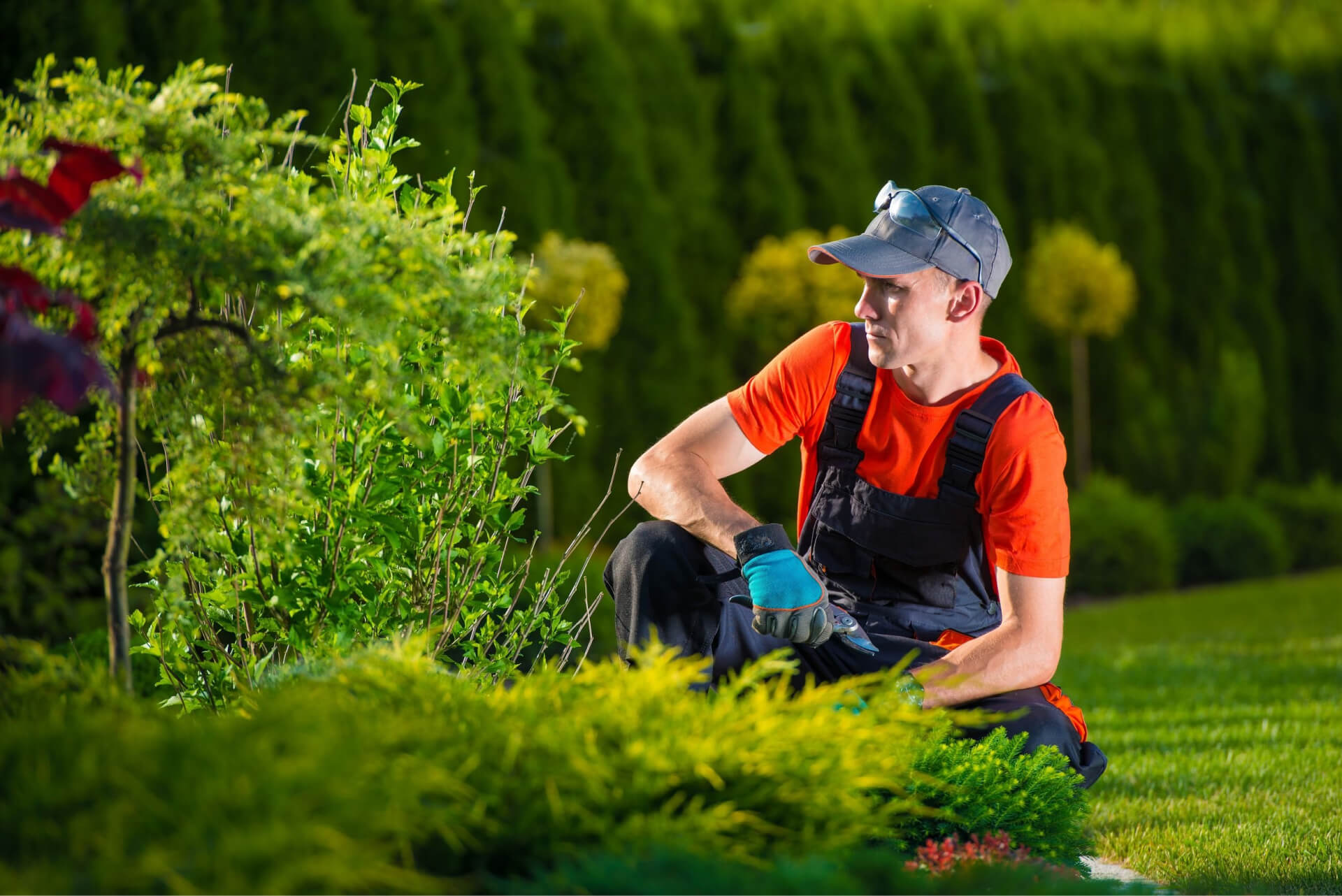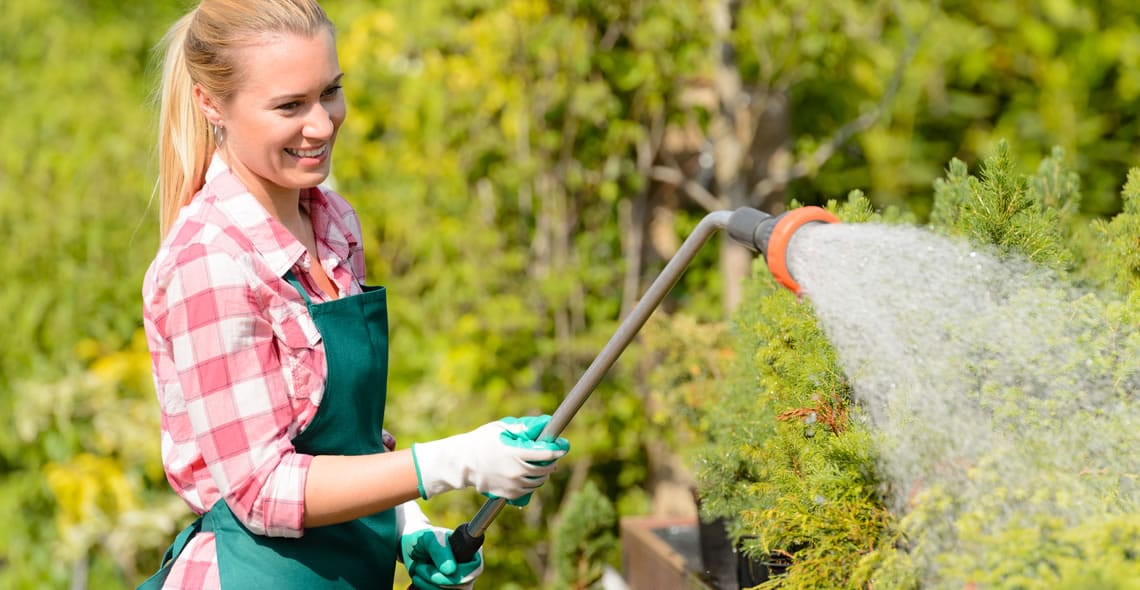Complete Guide to Landscaping
From the quick essentials to an in-depth look at landscaping
Your home, its style, and the ways you decorate and maintain it are all a representation of you and your taste. Why should the outside of your house – your yard, your garden, your tree line – be any different? Every year, Americans spend millions of hours and millions of dollars researching ways to transform their plain lawns and outdoor spaces into visibly engaging, well-furnished, lush areas full of plants, flowers, and trees. But one look up and down your block might leave you feeling like you’re in the game too late, or that you’ll have to spend a lot of money to catch up. We can help.
Table of Contents
Our in-depth guide to landscaping will take you through a Landscaping 101, helping you to envision the perfect space, and make the best plan to get you there. No matter your end goal or budget, landscaping can be both simple and affordable. Below are some quick landscaping essentials, in addition to a comprehensive list of landscaping topics, creative landscaping ideas, and best practices designed to help you make the most informed decision about how you approach landscaping services at your home.
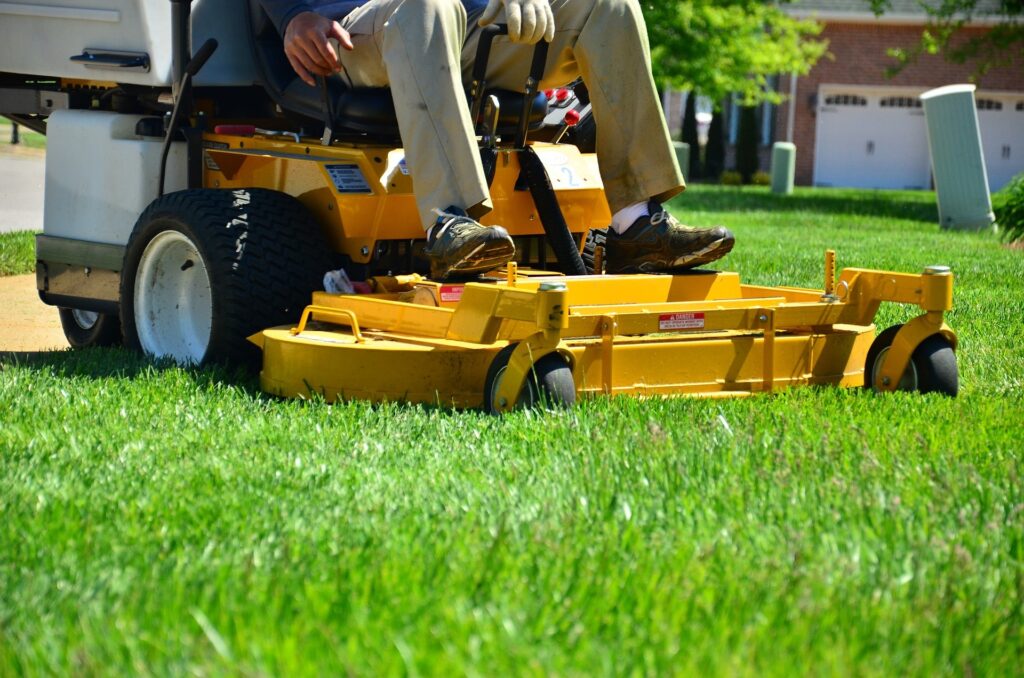
Landscaping Essentials
Know the Difference – Many homeowners think of landscaping as mowing the lawn or planting a few flowers. Landscaping is much broader than this, with many fantastic possibilities to explore!
Understand the Benefits – Whether it is putting your signature on your home’s landscape, increasing property value, going green, or saving money, landscaping has many positive factors outside of the beautiful scenes you will create.
Start Simple – Do not let the complex and layered landscaping scenes you see on TV or in your neighborhood be daunting. Everyone starts somewhere, and starting simple is often best!
Have a Goal in Mind – Do not take an aimless approach to your landscaping. Have a vision in mind and go for it specifically. It is important to be able to identify when you are “done” with a landscaping project.
Know Your Limits – If you live in the middle of a big city in the northeast, it is not likely you will be able to make your front yard a beautiful, sandy Zen-garden without serious cash and effort. Understand what you can do, and cannot do, with your space.
Decide on DIY VS Professional – It is important to decide between DIY and professional landscaping services when approaching a landscaping project. And while a DIY approach can be appealing, remember that professionals can often accomplish stunning results with a smaller budget and in a shorter timeframe!
Keep it Going – One of the biggest mistakes homeowners make is “setting it and forgetting it.” If you do not maintain the landscape work you have put in you will find it deteriorates and becomes an eyesore. Understand the maintenance requirements before you start!
In-Depth Landscaping Guide
Whether starting from scratch or redesigning your landscape at home, you will want to carefully consider your approach, your vision, and whether doing the landscaping yourself as a DIY project is the direction you want to take. If you are unsure about some of the steps, you can consult a local landscaping company for advice.
Landscaping – That is Just Grass Cutting, Right?
One common mistake that many first-time homeowners and those unfamiliar with landscaping make is the assumption that landscaping is just grass cutting. This is a lot like calling a pile of bricks a skyscraper, because how a lawn is mowed is only one small aspect of your property’s overall landscape. Landscaping is by definition making improvements to the exterior spaces of your property or maintaining those improvements you have already made. Make sure you do not confuse the two!
Why Should I Landscape?
There are a plethora of reasons to spruce up your outdoor space. No matter what your motivation, the benefits of landscaping start in the mind and extend as far as the world at large. See below for a breakdown of some of the reasons people cite as their biggest drivers when they landscape.

Making Landscaping Your Own
One of the great achievements in the lives of many adults is buying your own home. Once you have it, you put your mark on it. You make it your own. But if you ignore landscaping, you are missing out on one of the best canvases on which to paint your own vision. Adding that unique stamp to the page of your property will help your house itself feel more like the home you have always dreamed of!
Property Value
It is undeniable that good landscaping can go a long way in raising your property’s appeal when it comes time to sell it. And it does not have to be done by a professional to add value – Even a good DIY landscaping job can help polish your property’s image, adding to your home’s market value. A recent Washington Post article suggests your home’s value could rise by 20% just through good landscaping investments. However, it is very important to bear in mind that you do not want to go too far. If your landscaping is jarring, unusual, or fits badly with your neighborhood, you can actually negatively impact your property’s value.
Mental and Physical Health
Significant studies exist, including this one from Cornell University, which show that even just being outdoors, taking in nature is a good way to reduce stress and the mental and physical toll it takes on your body. Beyond this, there also are studies that suggest being in natural spaces can help reduce blood pressure, a major risk factor for those facing certain conditions, like heart disease or strokes. Additionally, if you are doing DIY landscaping, the exercise that it often entails (such as placing stonework, tilling ground for gardening, building fences or homemade trellises, etc.) can be as effective as a workout for burning calories.
Environmental Impact
With so much attention being paid to humans and their impact on our world, many have turned their attention towards ways of saving energy, reducing waste, and “Going Green.” And there may be no better way to contribute to these efforts than literally creating a natural green space at your own house. Trees and other leafy plants produce oxygen, and also remove carbon dioxide from the air, a greenhouse gas that contributes to global climate change. In fact some studies, such as this one from the Urban Forestry Network, suggest a mature tree can remove nearly 50 pounds of CO2 from the environment annually! And, a topic of great interest to many homeowners, landscaping can actually reduce your home cooling bills by soaking up sun that would otherwise hit your home directly, raising the temperature in the summer. And in the winter, trees can help block the icy winds from stealing heat from your house. This reduced heating and cooling need will translate into not only a cost savings for your family, but also help reduce your reliance on electric or gas to power your furnace and air conditioner.
Where Do I Even Start? – Landscaping For Beginners
In general, there are three steps to consider when you are approaching landscaping: design, implementation, and maintenance. These broad topics can be daunting and many homeowners struggle with how to begin. But there is no need to fear! We can help you put yourself in the proper mindset, make a plan, and execute.
Design Stage: Figuring Out Your Vision
First Step of Landscaping – Don’t Panic!
Many people find trying to consider their whole exterior space, and the changes they want to make to it all at once, completely overwhelming. It can be so intimidating they lock up mentally and cannot proceed. To prevent this, decide what the most important or valuable spot, feature, or area of your yard is. This could be the 60-year-old tree stretching to the sky, the natural pond in the back yard, or a flat, empty grassy area that forms a literal blank canvas. From there, consider how everything connects to that space and how you will form around that feature.

What Do You Want and Does It Need To Accomplish?
Next, consider what you update to your landscaping is going to do. This can be as broadly philosophical as the impact it will have on you and your happiness to something as tactile as blocking view of the ugly empty lot behind your house. Here are a few ideas that can help guide your thinking.- Single Feature Addition – If you are new to landscaping, have a small budget or just want to fill a gap in an otherwise well-done yard, consider adding just a single new feature to your landscaping. A new flowerbed, fence, or tree are simple things that can be a good entry point to landscaping and often do not require a professional to accomplish.
- Expansion of Existing Features – Maybe you already like the design of half of your backyard, but the other half just doesn’t line up. Or you have an incomplete section of decorative retaining wall, fence, or pathway. Whether expanding work already done or finishing a job that was started before and left to languish, expansion of existing work can require a more careful approach.
- Full Redesign – If you look out at your exterior space and feel nothing but despair at every single element you see, it is time to call in the big guns. Transforming even a modestly-sized outdoor space can be a massive undertaking, requiring lots of time, planning, and money. Before you approach a project of this size, it is probably a good idea to seek advice from a professional.
Landscaping Size and Budget Size
It is critical that you know how much you want to spend from the outset – and not to deviate from that amount without intentional thought. Landscaping projects can range from inexpensive, up to second-mortgage-level costly. Knowing which end of the spectrum you are leaning towards will guide every step on this path. And if you are using a professional landscaping company to do the job, knowing your budget will help them provide you with the most impact and best options for your price range.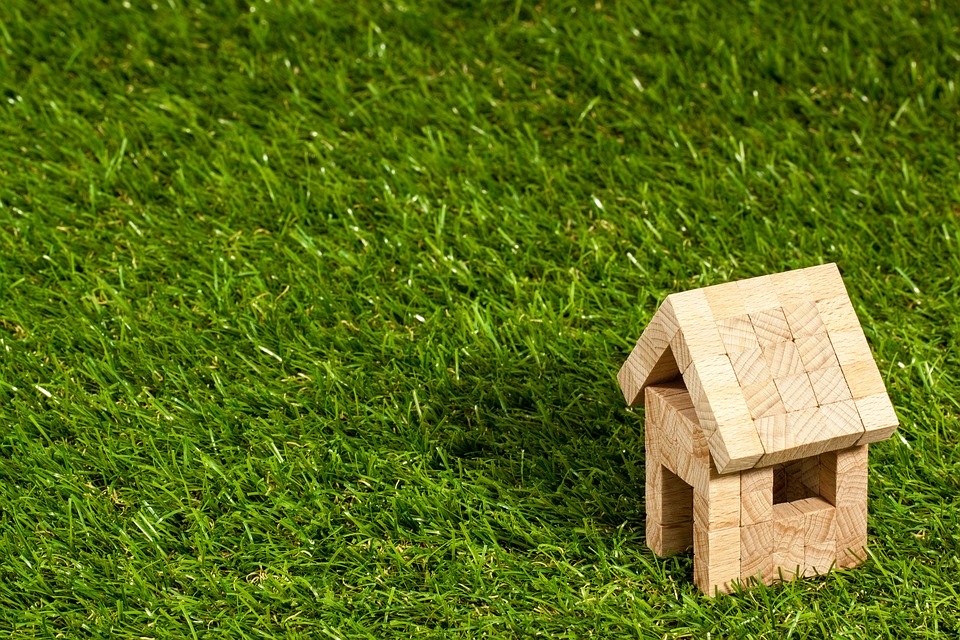
Once you have decided upon an amount, stick to it. Many homeowners have shared horror stories of DIY landscaping projects that start with a simple vision and grow out of control in both scope and budget. This can be one area where a professional landscaping company can really help. They will provide you a scope of work up front with a price. They will complete just that scope and at the cost cited. Anything additional they might want to suggest can be provided to you and decided upon later. Their professional eye will help make sure that once the job is done, everything in your landscape looks as good as possible even if you do not decide to add on any extras later.
Envisioning Your Landscape
Once you have decided upon the scope of your changes and the budget you have for those changes, it is time to start the physical process of making it a reality. A lot of what you do next will depend on the scope. If you are planting a single tree, you probably do not need to do too much up front work. But if you are doing anything from a small redesign of an area on up, here are a few things to help move things forward.

Know Your Landscaping Limits – Before you make a single landscape decision, consider your limitations very specifically. If you live in the middle of a big city with a quarter acre yard, you probably cannot make a sprawling pathway to get lost in. If you live in the southwest in a state that receives very little rain, it probably is not a good idea to build a landscape that requires serious amounts of water to survive. If you live in New Hampshire trying to create a sand and rock garden for your front yard might be a bit more challenging. Be reasonable and aim for an attainable goal.
Make a Sketch – Making a simple set of sketches can go a long way in helping you decide your landscaping vision. And do not worry – a lack of artistic skill is no obstacle. Stick lines for fences and triangles for trees will do just fine, as long as you can truly lay out the space. Consider your upgrades from every angle, and make sure your sketch helps you understand the impact of each piece you are planning. Especially consider anything like a door, window, or path that could be blocked by your plan.
Take Some Photos – Some DIY landscapers like to take photos of their spaces and study them for ideas of what to do with each. If you are skilled with digital photo editing software you can even alter the photos to get an idea of what adding or removing a feature will do to the landscape before spending a single dollar or moving a single stone.
Make Light of the Situation – How much sun does your yard get? Are there any areas that are just too bright in the day? By installing certain features, will you make a portion of your yard too shadowy to be enjoyable (or safe) at night without the addition of lights? If you don’t consider how light will impact your upgrades or affect your enjoyment of them, you might end up with a second landscaping project on your hands just as soon as you are done with the first.
Consider Unity – As you plan things out, take a moment to consider how it all will work together. This includes the new elements themselves and how they integrate with your existing landscaping elements. That beautiful fountain might look great on its own, but does it really fit in the middle of your lawn next to your birdbath?
Tear It Out – Some extreme DIY landscapers prefer the “blank slate” approach to landscaping. This is an incredibly risky proposition because you could end up tearing out something you eventually decide you could have used. Additionally, it can be a ton of work tearing out plants, shrubs, and stonework. However, if you know for a fact the rotten old bench, the ratty shrub, or overgrown vines are definitely on their way out, clearing that space can provide a clearer vision of what is to come.
Think Ahead – Make every decision with an eye on all the seasons you experience. Planting flowers and shrubs that only look good in spring might result in a beautiful April, but a bland August. If you get snow and ice yearly it may be a good idea to work in Evergreen plants to give you that splash of color against the gray of winter. Do not limit your design to a single season – you will find yourself wanting to start again as soon as that season ends!
Make a List – Once you have your budget in mind and your basic plan, it is important to list out every single item (and we mean every item) you will need to get you from start to finish. Right next to each of those items put their specific costs as sourced from local landscape or home improvement stores. Many DIY landscapers find that this is the moment where their plan and budget fall apart. And in a way, that is a good thing. Much better to know from the outset if your plan is not going to work than to find out when you are already too far in to stop! This also is a good time to comparison shop for the best price. If you hire a professional landscaper, they will handle all of this for you and within the budget you define.
Who Can Help Me With Landscaping Decisions?
When starting out any major change in life, it is always best to get a little advice. Whether it is talking to your doctor before starting an extreme exercise regimen or discussing the fin you want to install on your car with a mechanic, the landscaping changes you make to your home should not be made without some input from others. Consider turning to the following resources:
Neighbors – Your neighbors will help you in two big ways. They can guide you down the path of things they have done, professionals or stores they used. And perhaps most importantly, they can help you realize if any of your ideas are wildly out of sync with the neighborhood aesthetic.
Brokers and Realtors – Working with homes on a daily basis and seeing the buying patterns of potential purchasers, brokers and realtors can be invaluable resources when it comes time to remodel your landscape. They often can provide good advice on what landscape features are hot right now and that add the most long-lasting value.
Landscaping Companies, and Landscape Architects – Reaching out for a professional consultation and plan for your yard is never a bad idea when considering landscape work. Local and national companies may even provide the service for free. However, if you are contracting with a true landscape architect, it will almost always cost something to get advice or a plan. Many homeowners prefer to seek free quotes, but if your project is particularly sizeable, ambitious, or impactful, the eye of a landscape architect can be helpful.
Remember, always take any advice given with a grain of salt and consider the context. Your neighbor with the bright purple house and life-size chess set may not be the best resource in the world if you are looking to fit into your neighborhood’s global aesthetic.
Implementation Stage: DIY Landscaping or Professional Landscaping Company?
So, you have a vision, a basic plan, and you are ready to begin. But the real question now is whether you should take the job on yourself or contract with a landscape company to do the job for you. We have tips on how to do both.
DIY Landscaping
If you are going to take on the job yourself, here is a guide that can help you get started.
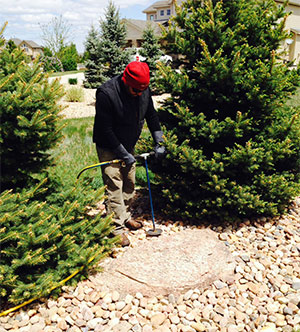
Understand Your Yard – It is imperative that you know your exterior space as well as anyone before you start any landscaping project so that you can prevent damage to it while you undertake your project. If you need a truckload of mulch or heavy masonry tiles delivered, it is probably not a great idea to have the truck drive directly through that spot in your yard that tends to hold water and could be torn up by the tires. Or, for example, storing your low-light flowers in the direct sun next to your house while you build out the flowerbed area. Be mindful and proceed carefully.
Plan Around Existing Features – More than one DIY landscaper has begun their project only to find they did not plan carefully enough around their mailbox, well, or septic system’s leech lines. Makes sure you take all of your permanent fixtures into account before you get started, and do not be afraid to seek professional input.
Break It Down – Make sure you plan your project completely from the start. Break it into small, single-step pieces not big multi-step chunks, and put it in a logical order. This will prevent you from making the task too daunting, and also from ordering materials too soon and having to solve a storage issue in the meantime.
Make A Physical Guide – Create visual guides in your yard to help you as you proceed. A large stake in the ground to mark where your tree will be planted, ropes around the area where your flowerbed will be, little flags to mark a future fence line. Whatever you are about to do, make sure you have marked everything off in advance. This visualization aid has the added benefit of letting you know of any potential space problems before you get too far in.
Start Heavy, End Light – A good general rule of thumb is to start with the biggest, heaviest items to be installed and to work your way down to the lightest from there. Stomping through your fresh flowerbed to install paving stones is not going to make your life any easier. Nor is driving heavy machinery through it to dig a hole for the full-grown tree you wanted to plant.
Bear in mind that no guide can provide enough specifics for your unique job because of how varied each can be. The approach for how to plant a grouping of perennial flowers is not the same as how to construct and install a heavy stone bench. It may still be a good idea to get a professional’s take even if taking it on yourself.
Professional Landscaping Company
Hiring a professional landscaping company will make your landscaping job much easier on a lot of levels, and has the added benefit of immediately adding an experienced individual or team to your planning. Here is what you can expect.
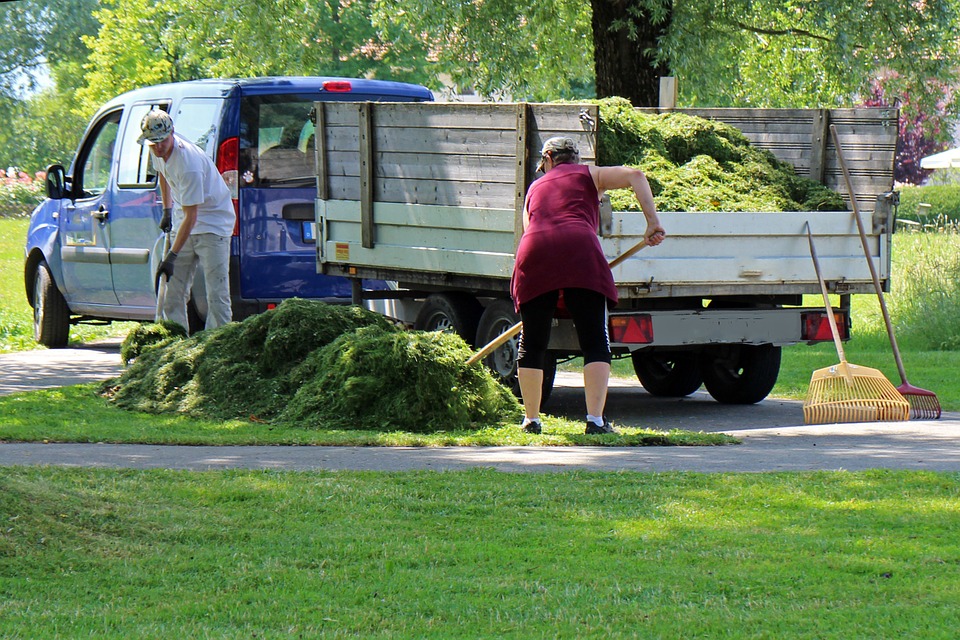
Research and Reputation – Before you begin any project with another company, do your due diligence. Online reviews are a good guide. Also check local business listings and the Better Business Bureau before engaging with any company. Make sure you are comfortable with the idea of any company you choose because you will have them at your property for whatever length of time the project will take to execute.
Consultation – Once you have decided on a company to do your project, they will come to your property to evaluate the situation, your proposed request for changes, and offer you advice from their professional experience. They may take measurements, evaluate your soil, and make suggestions about the sort of plants best suited to your unique yard situation. This is a good opportunity to pick their brain, and engage in a discussion about your yard. Remember, they are there to make sure you are happy with the outcome of the project!
Quote – Once the consultation is complete, the company will generally provide you a quote. This can be expressed verbally while they are on-site, or may be provided in a very formal write-up by email. Discuss the details of the quote with your landscaping company, and do not agree to it until you are fully satisfied. Generally speaking, by agreeing to the quote you also are agreeing to pay the amount stated for the work! Take your time and make sure everything is mutually agreeable before proceeding.
Execution – All that remains once you have agreed to the plan and price with your professional landscaping company is to sit back and let the job get done! And remember to be a good customer. While it can be tempting to get involved and learn everything you can from the workers, remember not to get in the way or create a hazardous situation for either yourself or them. And if the job is going to take more than a day or two, do not interfere with the work site. This can feel counterintuitive (after all – it is your property) but in the end it is best not to mess around with the tools and materials at your home in the middle of a job.
Important Landscaping Tips
As with most topics, there are several ideas in landscaping that pros will tell you get overlooked often. Below are a few of those things.
Consider Every Angle – As beautiful as a thing can be, if it is only beautiful in your yard when you are viewing it from a single, specific place, it is probably not a great feature (at least, not where it is now.) Do not build a feature that only looks good from one direction or angle. This can make your landscape design feel cheap, hasty, or poorly-considered. Instead, if you are in love with whatever the feature is (statue, trellis, etc.) consider if there is a way it can be moved to a location where it can only be viewed from the proper angle. A good example would be moving your ornate bench to rest against the side of your house instead of the middle of the yard.
Be Consistent – As noted previously, consistency is key. But that does not just mean make sure your stonework is all the same basic color scheme. Make sure you do not try to chase too many ideas at once. For example, having a front yard and a back yard that are wildly different in aesthetic design might seem like a good idea from the perspective of having varied environments. But unless you sit extremely far back off the road, or have a full privacy fence, it is going to create a conflicting feel when viewed by an outsider. And if you are aiming to resell later, it can make the sale that much harder. Pick a theme you are in love with and stick with it consistently.
Seating – More than a few DIY landscape designers have finished their grand projects only to stop and say “Wait, where do I sit?” If you are not incorporating seating into your designs you are forgetting a key point – how will you stop to enjoy the fruits of your labor? Unless your ideal landscape is a labyrinthine hedge maze, eventually you will want to sit down, breathe the fresh air, and take in the whole of the beautiful natural scenery around you.
Let it Grow – Take a breath and let the work you have done age before deciding to rip it out and replace it with a new landscaping idea. See how your stone takes on a new hue, your trees grow, your flowers flourish. And if it has become a bit stale after a while, consider the best ways to use what you have with new elements. Sometimes starting back at zero is not the best option. Let your landscaping evolve over time.
Maintenance Phase: Long-Lasting Landscape
Once the job is done, it is time to enjoy your newly landscaped outdoor space. But drive through any suburban neighborhood in August and you will find many who were eager to landscape in the spring, and did nothing at all to maintain it after that, resulting in a dead and dirty outdoor space that looks uninviting. So unless you want to find your own yard in the same sorry state, make sure you understand all the maintenance requirements of your landscaping elements, and execute them. Each area will have experts who have written guides to your specific conditions, like this one written for California landscaping. Bearing the following in mind can help.
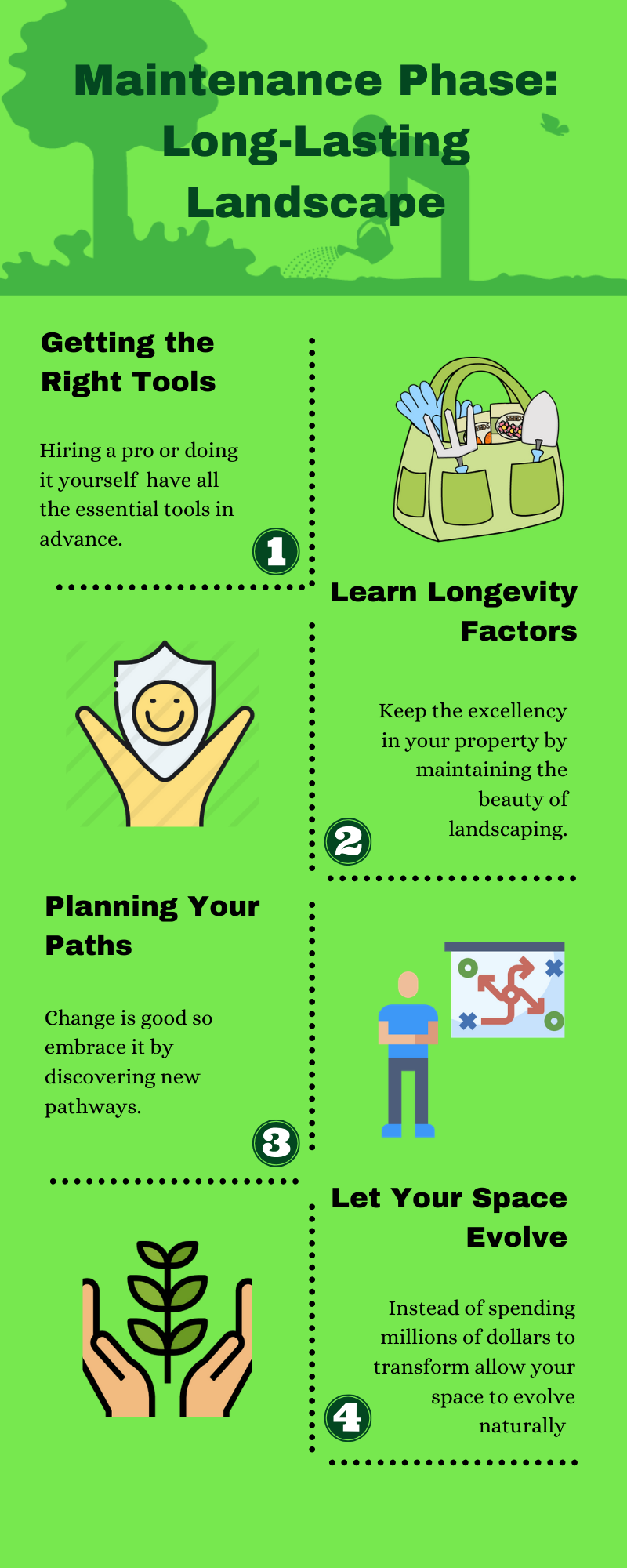
Have the Right Tools – Many homeowners come home from work to find the landscape company they hired has completed work on their new exterior upgrades, only to realize they do not have any of the tools they need to maintain it. Whether doing a DIY project or having a pro help you out, understand all of the maintenance that is required to keep it looking good, and buy all of the tools in advance.
Understand The Longevity Factors – Some portions of your landscaping are going to last much longer than others. The Maple you planted will probably outlast the flowers in your window boxes. Knowing which pieces will need replaced or refreshed sooner than others will help you maintain the beauty of your scenery for longer.
Plan Your Paths – When you design your landscaping, you will have paths in mind. But over time the natural paths that people take through your yard may change. Whether it is the placement of a nice bench or a barbecue, where people walk can alter over time, wearing out paths in your grass, or even your flowerbeds. When this happens it is often best to embrace the change. Prepare a plan for a new path or hardscaping to prevent damage and add an element of intentionality to your newly discovered pathway!
Allow Your Space to Evolve, Not Die – Knowing that your space cannot maintain its current state forever no matter what efforts you might make can be disheartening. However many see this as a great opportunity to allow their spaces to evolve over time, taking on new and exciting elements that supplant the old, year after year. It is important not to let any element of your yard just die off, however. Filling in a blank made by neglect is not the same as building on top of a lovingly cared-for piece of landscaping past its prime.
Landscaping Ideas and Services
Some of the most common landscaping services include cleanups, mulch and hardscape work. We have compiled a list of those elements, plus ideas to help fire your imagination and get you primed to explore all of the landscaping possibilities you can pursue at your own home!
Spring Cleanup – After the long winter months are over, many homeowners must face the fact that yard work is back again. This is especially challenging for some because the first work needed in the yard every spring is often much more intense than simply cutting the grass and removing some spare leaves. That is why professional landscaping companies offer Spring Cleanup to get you started on the right foot and prep you for the year to come. These can include services like the removal of debris (twigs, leaves etc.) and composting, completion of an initial grass cut, fixing bare grass patches, removing and preventing weeds, feeding and fertilizing grass, mulching flowerbeds, edging, pruning trees and shrubs, and aerating your lawn.
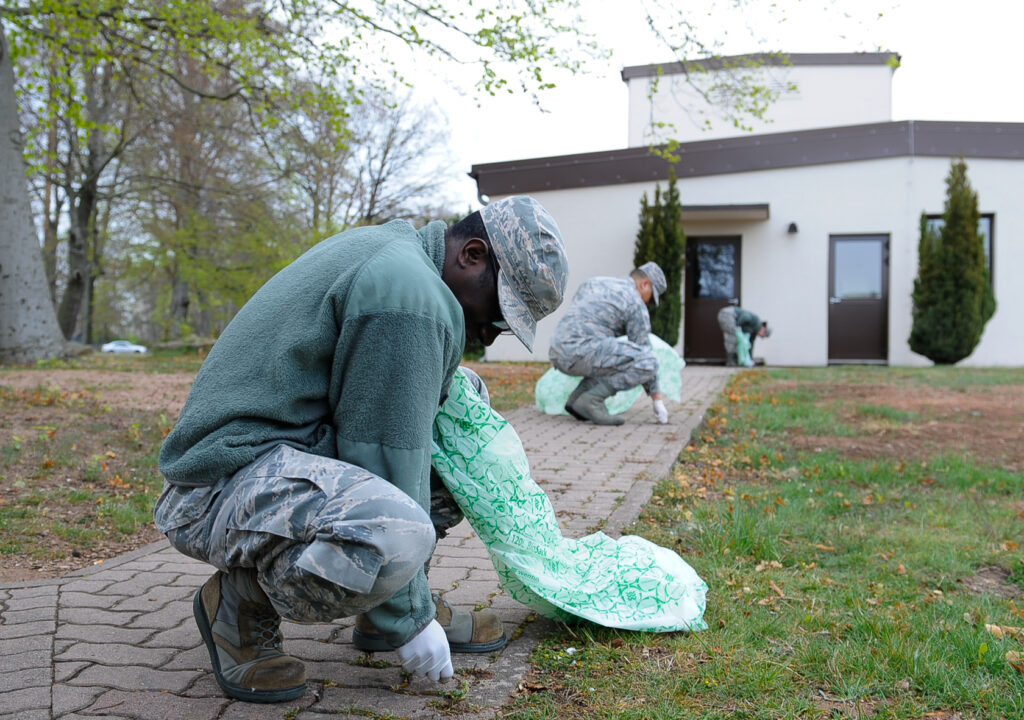
Mulching – It is no exaggeration to say that mulching is a little like landscape magic. Very few landscaping services can add so much value and visual appeal to your property for so little investment of both time and money. Adding mulch can help you define clean lines of separation between your flowerbeds and the rest of your yard, creating a contrast that really pops and a visually pleasing landscape. And mulch is one of the least expensive upgrades available, with many homeowners able to fully mulch their exterior spaces for under $500. Plus, professional mulch choices like cedar will not only add a beautiful splash of color, but are also known to repel certain types of pests naturally. If you are on a tight budget, mulch is a great place to start!
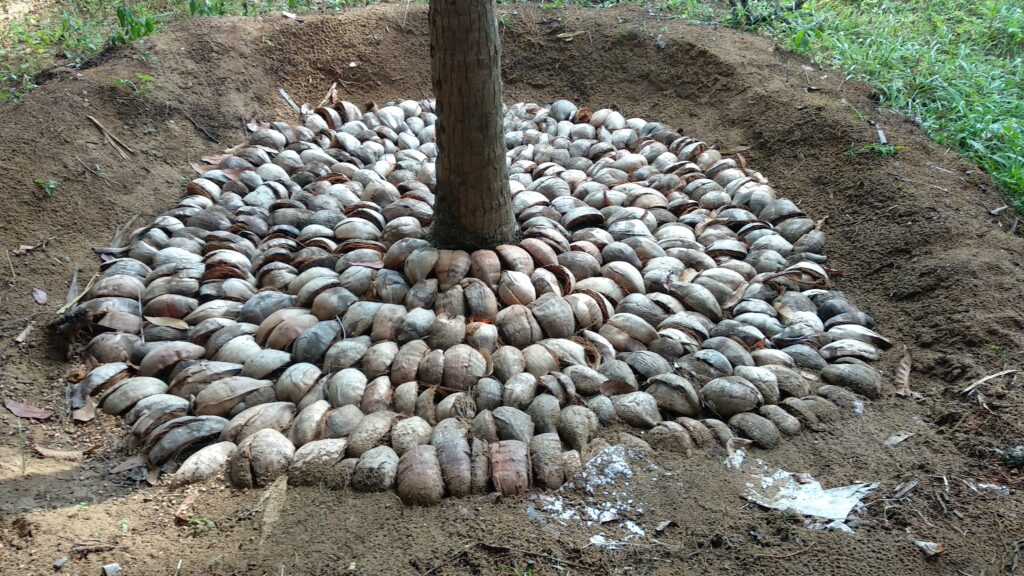
Stone Work – The changes you can make to your property’s look and feel with stone can be truly astonishing. This can be as simple as the addition of pathways made of paving tiles, or as complex as a natural stone retaining wall with beautiful patterns. Stone work makes every decision and aspect of your exterior space look crisp and intentional, conferring upon the landscape an air of professionalism and charm. A landscaper can offer you many options, and help you decide where to start. These can include options such as tile or gravel walkways, rock beds, decorative boulders or accent stones, pathway borders, and flowerbed borders. No matter what your environment, there is a stone to complement your landscape look!
Arborist and Tree Work – Beyond the obvious benefit to the environment, and the aforementioned positive impact on you, your energy bills, and your mental health, trees are one of the most striking and beautiful things you can have in your yard. And while some tree work can be done DIY, hiring a professional landscaper or arborist is usually a better choice. Not only are they equipped with a stronger knowledge of the biology and structure of trees, but they are physically equipped with specialized gear that the average homeowner cannot get. Using their knowledge and tools, they can safely and easily prune, shape, and care for your existing trees. Additionally they can help you pick out new trees that will thrive in your yard and plant them without damage to the tree itself.
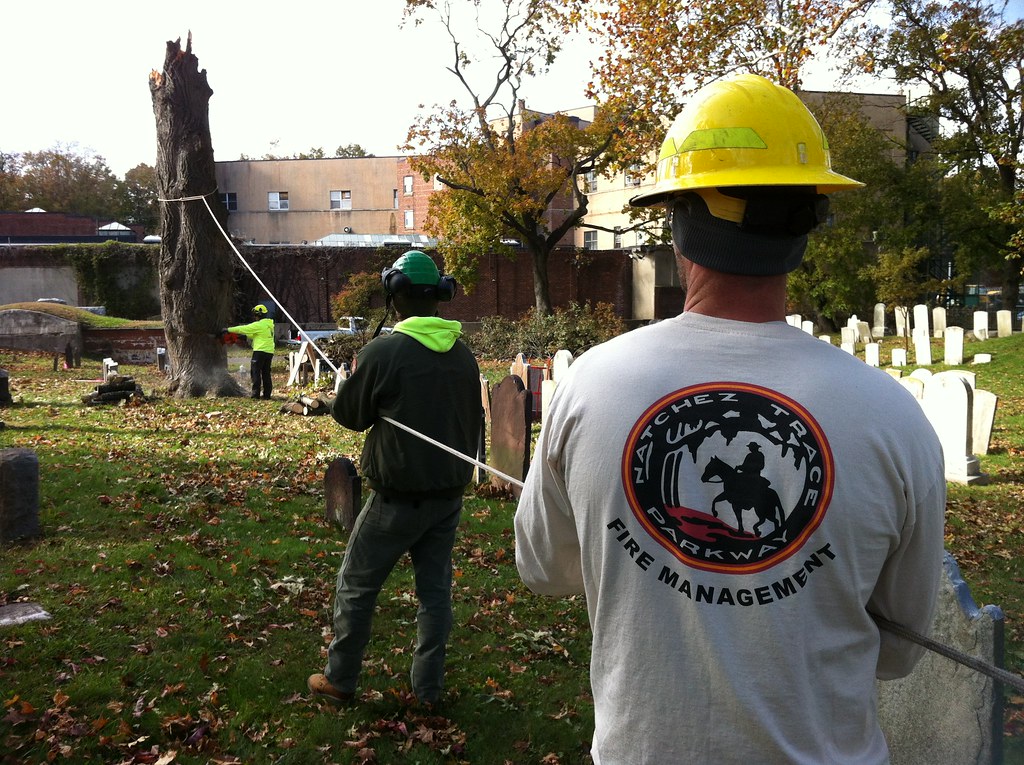
Artificial Grass/Turf Installation – Though it may seem strange, the installation of artificial grass has seen a resurgence in recent years. For those hot and dry areas where growing natural grass is a problem, or for those who are particularly water-use conscious, the advantages of this unnatural option are numerous. Installed by removing your natural sod and laying down the new turf in a clean, well-secured fashion, this artificial grass is hardy, and can last for years with minimal maintenance. Pet owners find it an especially valuable option, since it holds up well to animals and is not stained or burned by them the way natural grass is. And perhaps best of all, you never need to mow it!
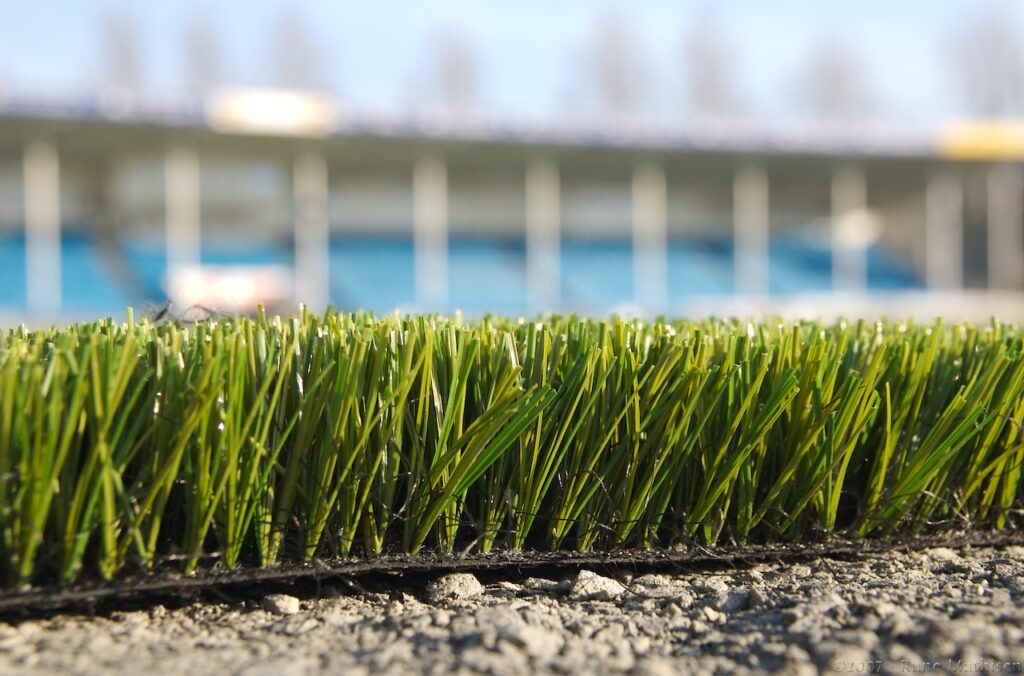
Fall Cleanup – Fall is one of the most beautiful times of year for much of North America. But it creates its own sort of mess, leaving your yard covered in leaves and branches, your flowerbeds full of weeds, and your driveway a mess. Leaving these piles of natural debris lying around can be an attractive option, since cleaning them up and doing a final mow for your lawn can be a lot of effort. But it is important to ready your property for winter to prevent an even bigger mess, permanent driveway staining, and even bare patches in your yard come spring. That is why landscapers recommend a Fall Cleanup. These can include services like feeding and fertilizing your lawn, aerating for root growth and to prevent soil compaction, the removal or mulching of leaves, and tending flowerbeds.
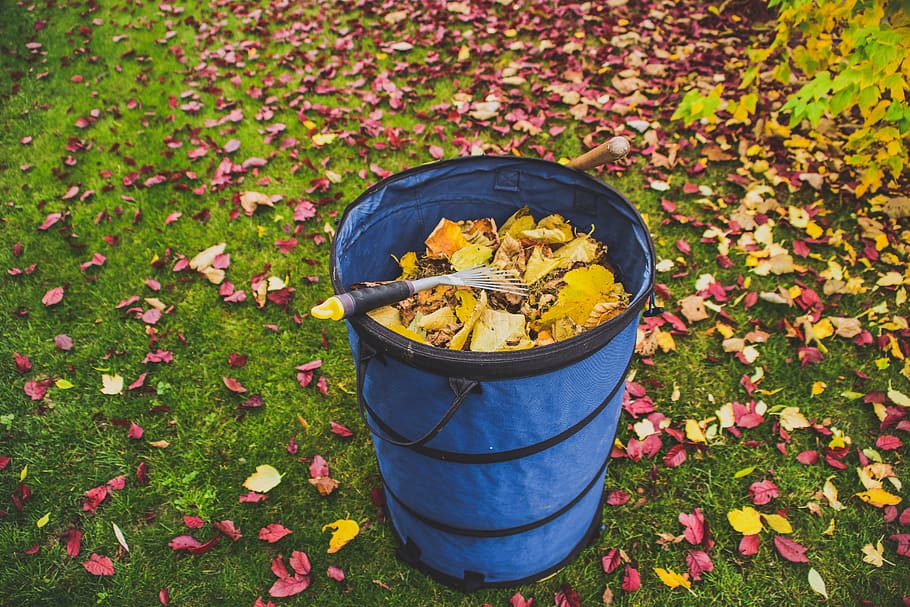
Additional Landscaping Services to Consider
Application of Fertilizer
Application of Weed Control
Application of Organic Weed Control
Garden Beds – Creation or Cleanup
Shrubs – Planting, Pruning, and Shaping
Leaf Cleanup
Yard Aeration
Tree Care – Planting, Pruning, and Shaping
Asphalt – Cleaning, Resurfacing, or Installation
Concrete – Cleaning, Repair, or Installation
Decks – Building, Repairing, Expanding
Dethatching
Full Landscape Design
Fences – Install, Repair, or Removal
Installation of Fire Features
Installation of Pathways, Flagstones, Pavers Etc.
Installation of Irrigation Systems
Junk Removal
Installation of Pergolas
Ponds – Maintenance, or Creation
Retaining Wall – Repair or Installation
Installation of Water Features
Sodding
Hardscaping
Terraces
Lightscaping – For Accent, Aesthetics, and Security
Landscape Fabric Installation
Fixture Installation – Old Appliances, Tubs, Planter Boxes, Tree Benches, etc.
Related Blogs
At What Age Should You Stop Shoveling Snow?
Snow shoveling is a physical exercise, similar to running full speed on a treadmill. Add
What is The Best Way to Melt Snow?
The result of a snowstorm can cause inconveniences. It becomes even worse after the street
The Benefits of Professional Landscape Maintenance for Your Home
Summer is usually the season spent outdoor and mostly in our yards. Your yard needs
Summer Home Maintenance: The Grass is Greener on the Other Side of your Summer To-Do List!
What outdoor home improvement tasks should you do this summer?The proverbial saying “prevention is better
When Should You Topdress Your Lawn
Topdressing a lawn involves spreading a thin layer of material such as sand or compost over the
What are the Basics of Lawn Fertilization
Beautiful lawns aren’t a product of nature but are created through careful nurturing and maintenance,


